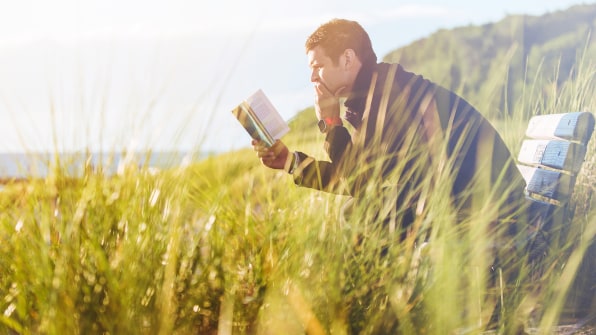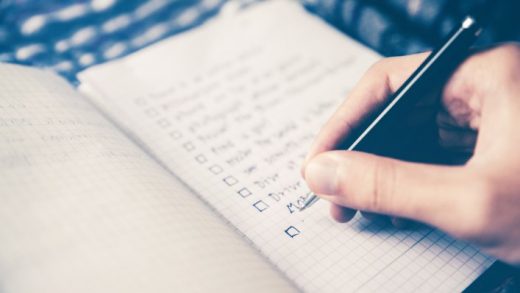These 10 CEOs’ Top To-Do List Hacks
You’ve never quite figured out the best way to organize your to-do list–join the club. Perhaps you’ve got dozens of pages of to-dos stored away in the Notes app on your phone, and dozens more spread out across Slack and Trello. Or maybe you’ve tried a bunch to-do list apps and haven’t been able to commit to one. Fear not: There’s no right way to do to-do lists.
“What’s more important than an app is having a reliable system that can help you prioritize the important things and juggle many things at once without feeling overwhelmed,” says Amir Salihefendic, CEO of productivity startup Doist. “My suggestion would be to have a system, [rather] than just a to-do app.”
What kind of system? To find out, Fast Company asked 10 CEOs how they manage their own daily and weekly task lists. While all of them have different (and evolving) preferences, each has pinned down a workflow to suit their needs right now.

Jot It On The Smallest Surface Possible
Many execs aim to keep their to-do lists as short and urgent as possible, to avoid carrying over tasks from one day to the next. For Rachel Blumenthal, the CEO of Rockets of Awesome, a subscription service for children’s clothing, this means going analog. She scribbles her priorities for the day–the “three to eight things that you absolutely have to complete”–on a single sticky note. “A Post-It is great because it can only fit so many to-dos,” Blumenthal says.
But Blumenthal doesn’t stop with just writing to-dos by hand; she scrawls the most important thing she needs to do on a given day on her hand, namely, “in between my thumb and pointer finger.” That way, she says, “I look at it all day long and can’t miss it.”
Tackle Only What You Can Memorize
Like Blumenthal, Scott Tannen, CEO of luxury bedding company Boll & Branch, also swears by Post-It notes, but only when absolutely necessary. Otherwise, he doesn’t bother with a to-do list at all. “Believe it or not, I rarely write things down, and for better or for worse, I keep everything in my head,” Tannen says. “It drives people crazy, but I generally don’t forget things too often, at least not that I can remember.”

Let Your Inbox Be Your Guide
It’s not an uncommon approach. While some people use Evernote, Google Keep, or a note-taking app, a number of execs avoid making conventional lists. Instead, they opt for platforms like Slack and Trello to manage what they need to do. “I am a power user of the starred email function in Gmail as a to-do list,” says Dan Teran, CEO of the office management startup Managed by Q, “and usually find time over the weekend or in the evening to crank through correspondence that piles up.”
Shivani Siroya, CEO of fintech startup Tala, treats her inbox and Slack as ad hoc to-do lists; if there’s a message or DM still staring at her, it’s a task that’s still left to do.
Put The Spillover On Paper
But for many CEOs, simplicity is key–which might explain why, when faced with a glut of task-management apps, some fall back on analog lists and planners. Siroya says she uses the Notes app to whip up quick lists, and files away longer-term tasks in Google Docs. Still, like Blumenthal and Tannen, she prefers to commit the rest of it to paper. “I’ve figured out how to make all these digital systems work for me, but I have to admit, at the end of the day, a list on paper still feels the most useful,” Siroya says.
Even PGi’s Ted Schrafft maintains a handwritten list of daily to-dos, despite being the CEO of a collaboration software company, while Cherae Robinson, CEO of travel startup Tastemakers Africa, uses a physical planner to tackle short-term tasks. Teran commits some of his workday’s top priorities to print as well. “I keep a notebook with me at all times to log items that require follow-up,” he says, adding that he has a second notebook for recording “big ideas that I want to revisit with more space to think.”

Delegate What You Can
Some execs recruit digital aid in the form of virtual assistants. Even Tannen, who tries to rely on sheer mind power to keep his to-dos in order, outsources some of it to an AI helper. “Clara is like my personal Pepper Potts, and she handles the back and forth of scheduling,” he says (referring, respectively, to the real-world, email-based AI assistant and the fictional assistant of Tony Stark in Iron Man, who later becomes CEO of Stark Industries). Blumenthal and Teran, on the other hand, have human assistants who pitch in with scheduling and time-management help. “The day I relinquished control of my calendar to my assistant was the day I recaptured 40% of my time back,” Blumenthal says.
Give It Time . . .
A great to-do list, after all, is worthless if you don’t manage your time well. “One of my workflow secrets is setting time limits,” Yunha Kim, CEO of meditation app Simple Habit, says. “At a startup like ours, we always have never-ending lists of to-dos, and it’s often just not feasible to fully finish a task in one sitting.”
In other words, be patient. Figuring out a to-do list system that works for you is a skill like any other–one that even the most productive leaders need to spend time honing. “Managing a day-to-day workflow and to-do lists takes months and years to become good at as a business leader,” points out Riana Lynn, CEO of the food-sourcing software company FoodTrace.

. . . And Prioritize You
As she sees it, that means prioritizing some things that may never make your daily to-do list–including self-care. “Sleep and good food,” Lynn adds, “is the first key to all of this.”
Should you ditch that to-do list app for a paper planner—or scrap both entirely? Here’s how 10 execs stay organized day in and day out.
You’ve never quite figured out the best way to organize your to-do list–join the club. Perhaps you’ve got dozens of pages of to-dos stored away in the Notes app on your phone, and dozens more spread out across Slack and Trello. Or maybe you’ve tried a bunch to-do list apps and haven’t been able to commit to one. Fear not: There’s no right way to do to-do lists.
Fast Company , Read Full Story
(45)














